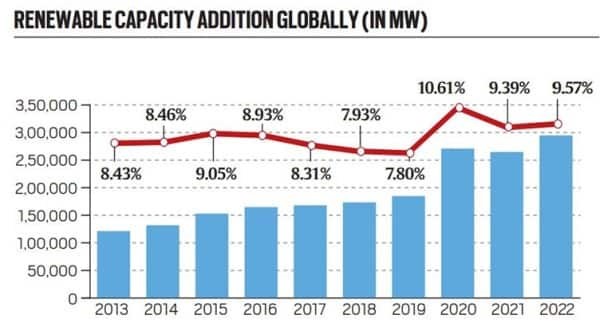7667766266
enquiry@shankarias.in
G20 countries have committed to work towards tripling global renewable energy capacity by 2030 but there are several challenges in achieving the target.
To know about the key outcomes of the G20 Summit, click here
The G20 nations collectively contribute to approximately 80% of global emissions.
The GCF, established by 194 countries (Copenhagen Accord at COP15) is the largest global fund dedicated to supporting developing countries to reduce global emissions and helping communities adapt to the effects of climate change.
Status of Renewable Energy Production

Role of ISA in tripling Renewable Energy capacity
Solar energy constitutes more than 50% of new renewable energy capacity additions every year.
References